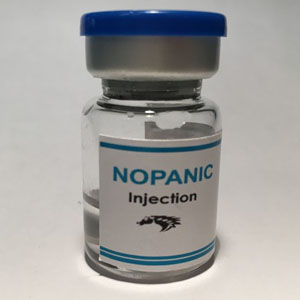Description
Where to Buy Sedivet 1.0% Injection Online
Buy Sedivet 1.0% Injection Online from us at very competitive prices. We are 100% legit and efficient supplier of performance supplements for equine sports. We offer the best market prices and offer a huge discount for bulk buyers. Packaging and shipping are very discreet and bypass all custom or law enforcement. Delivery through regular and express airmail within 2-3 business days from dispatch.
For more information or a special quotation, do not hesitate to contact us.
Sedative & Analgesic For Horses
(romifidine hydrochloride)
Boehringer Ingelheim Sedivet 1.0% Injection is indicated for use as a sedative and analgesic to facilitate handling, clinical examinations, clinical procedures, and minor surgical procedures in adult horses. Buy Sedivet 1.0% Injection is also indicated as a preanesthetic prior to the induction of general anesthesia in adult horses.
Dosage and Administration:
Sedation and Analgesia Dose: Administer slowly as a single IV injection using a dosage range of 40 – 120 µg/kg (0.4 – 1.2 ml/100 kg body weight) depending on the depth and duration of sedation that is required. The onset of action occurs in 30 seconds to 5 minutes, and gradually subsides during the next 2 to 4 hours. Degree of sedation and analgesia is dose-and time-dependent; therefore, more profound analgesia will occur with larger doses, as well as closer to the time of injection.
The horse should be allowed to rest quietly for several minutes prior to and following injection.
The duration of analgesia is shorter than the duration of sedation.
|
Sedation Dose |
Onset of Sedation |
Duration of Sedation |
Onset of Analgesia |
Duration of Analgesia |
|
40 µg/kg |
2-4 minutes |
75 minutes |
5 minutes |
30 minutes |
|
120 µg/kg |
2-4 minutes |
3 hours |
5 minutes |
150 minutes |
Preanesthesia Dose: A single IV injection using a dose of 100 µg/kg (1.0 mL/100 kg body weight) was shown to be effective in the preanesthesia dose confirmation study. Anesthesia should be induced after maximum sedation is achieved. The administration of a2-agonists results in anesthetic sparing effects; therefore, anesthetic doses should be reduced to avoid overdose.
Mild to moderate sedation occurs within 2-4 minutes. Following induction, lateral recumbency occurs within 4 minutes, followed by complete anesthesia within 6-16 minutes. During recovery from anesthesia, sternal recumbency occurs within 12-83 minutes, followed by standing in 17-84 minutes. Recovery time is primarily determined by the choice of induction anesthetic and/or the duration of anesthesia.
Contraindications: Sedivet 1.0% Injection is contraindicated in horses with known hypersensitivity to romifidine.
Intravenous potentiated sulfonamides should not be used in anesthetized or sedated horses as potentially fatal cardiac dysrhythmias may occur.
Caution: Federal law restricts this drug to use by or on the order of a licensed veterinarian.
Not for human use. Keep this and all drugs out of the reach of children.
Not for horses intended for human consumption.
Although apparently deeply sedated, some horses may still respond to external stimuli with defensive movements (for example, kicking). Sedated horses are frequently ataxic. Routine safety measures should be used to protect practitioners and handlers.
Romifidine hydrochloride can be absorbed and may cause irritation following direct exposure to skin, eyes or mouth. In case of accidental eye exposure, flush with water for 15 minutes. In case of accidental skin exposure, wash with soap and water. Remove contaminated clothing. In case of accidental oral exposure or injection, seek medical attention. If irritation or other adverse reaction occurs (for example, sedation, hypotension, bradycardia), seek medical attention.
As with all injectable drugs causing profound physiological effects, precautions should be taken by practitioners to prevent accidental self-injection when handling and using filled syringes. Users receiving treatment for blood pressure abnormalities should take special precaution to avoid exposure to this product.
Note to Veterinarian: This product contains an a2-adrenoceptor agonist and can be absorbed by oral and dermal routes.
Precautions: The use of Buy Sedivet 1.0% Injection with other a2-agonists is not recommended since the effects (for example, cardiovascular changes, respiratory depression, ataxia) could be additive.
The adverse effects of Sedivet 1.0% Injection may be potentiated by the administration of other sedatives, tranquilizers, or opioids.
The use of epinephrine should be avoided since epinephrine may potentiate the effects of a2-agonists.
Anesthetic doses should be reduced in the presence of Sedivet 1.0% Injection to avoid excessive depression of the central nervous system.
Buy Sedivet 1.0% Injection has not been evaluated in horses with compromised cardiovascular function. The effects of bradycardia, increased vascular resistance, decreased cardiac output, and respiratory depression could be significant in horses with primary myocardial disease, or circulatory shock.
Sedivet 1.0% Injection should not be used in horses with respiratory disease, hepatic or renal disease, dehydration, or other systemic conditions of compromised health.
The effects of Sedivet 1.0% Injection have not been evaluated in horses with colic.
The effects of Sedivet 1.0% Injection have not been evaluated in pregnant mares, in horses intended for breeding, or in foals.
Adverse Reactions: As with other drugs of this class, the administration of Sedivet 1.0% Injection causes bradycardia (possibly profound), first and second degree atrioventricular heart block, and hypotension. The frequency and duration of cardiac arrhythmias have been shown to be dose related.
The following commonly occurring adverse reactions have been noted using a2-agonists: hypertension, hypotension, bradycardia, ataxia, piloerection, sweating, muscle tremors, salivation, penile relaxation, urination (about an hour after treatment), lowering of head (causing passive congestion and swelling of face, lips, upper airways), stridor, decreased gastrointestinal motility, flatulence, and mild colic.
The potential exists, as with all a2-agonists, for isolated incidences of excitation (paradoxical response).
Rare anaphylactic reactions have been reported, including one or more of the following: urticaria, dyspnea, edema of the upper airways and head, trembling, recumbency, and subsequent death.
Storage Information: Store at controlled room temperature, 59-86°F (15-30°C).
Packaging: Sedivet 1.0% Injection is supplied in 20 mL multi-dose vials containing 10 mg romifidine hydrochloride per mL.






Reviews
There are no reviews yet.